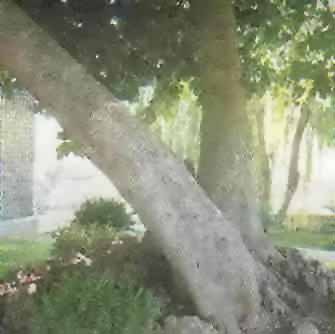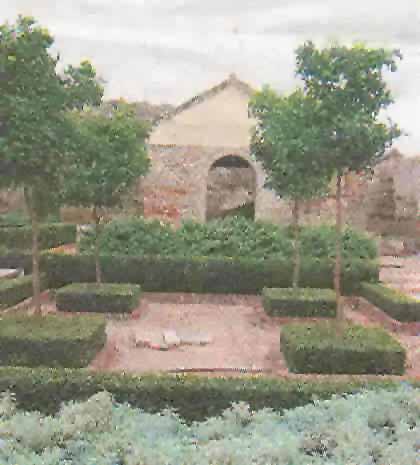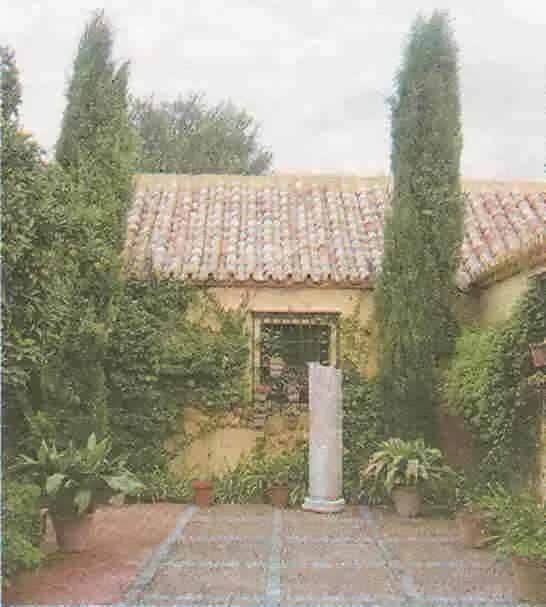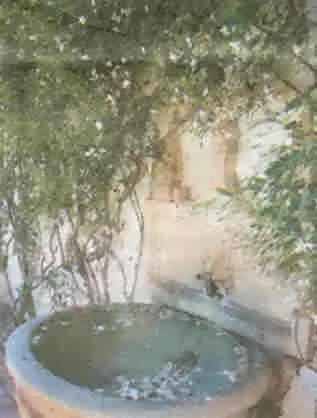 |
||
|
The Geometric Gardens of Andalusia
|
||
|
The planting schemes of southem Spain offer Greek gardeners fresh ideas for relatively small spaces
|
Hedging is a predominant feature in many of the larger patio |
|
 |
|
|
|
Though the climate may be similar, the Moorish influence has given and still given Spanish gardens an altogether different feel to the totally informal, eclectic collections of pots and feta tin containers to be found in a Greek backyard.n southern |
 |
|
|
|
 Foliage predominates -cypress, orange, jasmine and iris are typical |
|
|
The patio garden was central to Moorish family life, and still is today to the Andalusians. Here a large proportion of family living took place, especially in the evenings, though guests were not usually entertained here - the emphasis was very much on family privacy. The meaning of patio here is something more than the modern sense of a paved outdoor area adjoining a house. The Spanish patio is a roofless inner courtyard - it was, and is, regarded as an outdoor room forming part of the total building concept. High walls of white stuccoed masonry cast a welcome shadow, against which green foliage gave the predominant colour, followed by the purple-blue of the iris (a colour often taken up in the tiles). Accessories such as benches, pots and fountains were placed carefully for maximum effect paths as well as steps were also faced with tiles, bricks, coloured earth or smooth pebbles laid in geometric fashion and ranging in colour from deep purple through to grey and white. From the street only an occasionally wrought iron gateway broke the unadorned facade from where a protected but inviting glimpse of a patio with its small pool, fountain and vegetation were revealed Many such quiet and cloistered patio gardens, shaded by orange and cypress trees may still be found in Andalusia nowadays. Orange trees feature widely - they go back to the earliest gardens - often planted in rows, sometimes. espaliered; in later and larger gardens the maze became popular and was formed of clipped box, cypress, myrtle, juniper or holly, preference being given to aromatic plants. Date palms, pomegranates and grapevines were also planted. Canary palms or pines were often placed in the centre of a courtyard to afford shade, the square or circular surface area around the trunk filled with groundcover such as violets. Nowadays Canary palms are still widely used as well as wild olives, loquat and pomegranate. Flowers were usually chosen for evening fragrance, so white blooms such as jasmine and lilies predominated. Today Cestrum parqui is added to this trio for heady night-time perfume. Myrtle, narcissus, roses, marjoram, carnations and poppies are among flowers recorded in the Arab Moorish gardens, and many are still used today. Acanthus, Qivia and Zimtedeischia all feature significantly - architectural plants suited to the formal style. |
||
 Night-scented flowers such as Jasmine combine beautifully with all-important water features |
Pots, used as accents, retain a significant role in the Andalusian patio - the geometrical arrangements are carefully arranged to create a succession of seasonal favourites. Plants are brought centre stage and then withdrawn and replaced once their feature of interest has passed - be that bloom, leaf colour or scent. Each plant is shaped and groomed, placed on show and meant to be seen from every angle. In the summer the patios are covered with canvas during the day, and the paving slabs damped down to increase humidity. Foliage becomes predominant at this time large pots of ferns supplemented by wispy Asparagus tenuifolius, clipped balls of box and other evergreens guaranteed to withstand the heat. |
|
|
For further infoImation about membership and activities, contact The Mediterranean Garden Society, PO Box 14, Peania, GR 19002, Greere. Erriail mgssec@hol.gr, website www.mediterraneangardensociety.org For more infoImation about Islamic influence on the gardens of Spain, read Gardens, Landscapes and Vision in the Places of Islamic Spain by.D Fairchild Ruggles, 2003, ISBN 0-271-02247-7 |
||
HCS readers can view other excellent articles by Jennifer Gay in the News & Issues and especially the sections of our extensive, permanent archives at the URL http://www.helleniccomserve.com./contents.html
All articles of Athens News appearing on HCS have been reprinted with permission. |
||
 |
||
|
|
||
|
2000 © Hellenic Communication Service, L.L.C. All Rights Reserved. http://www.HellenicComServe.com |
||
